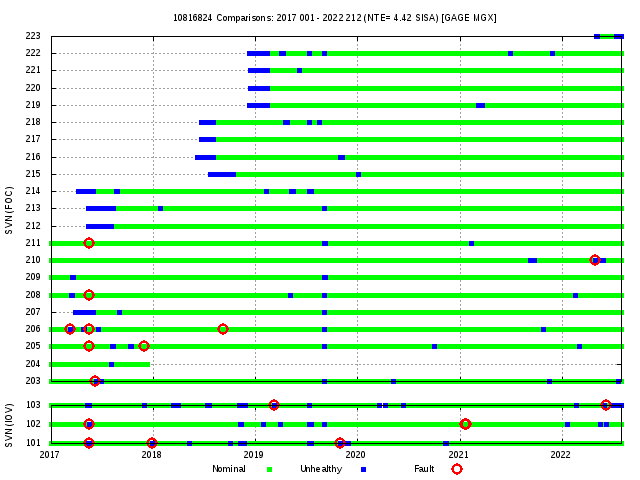Characterization of orbit and clock errors of Galileo satellites, and determination of their failure probabilities by the ARAIM civil aviation augmentation system
Apr 03, 2023
Maria Teresa Alonso defended her thesis co-supervised by Jaume Sanz Subirana and Adrià Rovira Gracía on May 31 at the North Campus in Barcelona. Titled Galileo Broadcast Ephemeris and Clock Errors, and Observed Fault Probabilities for ARAIM. The thesis presents the characterization of the orbit and clock errors of the satellites of the European positioning system Galileo, and determines, observationally, their probabilities of failure.
Galileo is the European Global Navigation Satellite System (GNSS). Like the other GNSS (GPS, GLONASS and BeiDou), it provides positioning, navigation and weather services for users around the planet.
Galileo Initial Service Open Service (IS OS) was declared on December 15, 2016 by the European Commission. Following the Galileo Safety-of-Life (SoL) redesign in the early 2010s, Galileo is intended to support the augmentation of SoL services through a satellite-based augmentation system (SBAS ) with multiple constellation and dual frequency (DFMC), and advanced techniques for autonomous monitoring of integrity by the receiver (Advanced RAIM or ARAIM). Integrity denotes the degree of confidence that can be placed in the information provided by the navigation system.
Characterization of the ephemeris and clock errors of GNSS satellites is a key element in validating assumptions for the integrity analysis of GNSS SoL augmentation systems. Specifically, performance metrics for SoL applications require the characterization of nominal user range errors (UREs), as well as knowledge of the failure probability of satellites, or constellations, i.e. when one or more satellites are not in nominal mode.
The study involves an end-to-end analysis of Galileo and GPS satellites to evaluate autonomous integrity monitoring by the receiver using ARAIM. This is articulated through two main objectives: 1) The aforementioned characterization of the ephemerides and the clock transmitted by the satellites, in order to calculate the failure probabilities, and the determination of an upper limit for the User Range Accuracy ( URA). 2) The use of these experimental results, for the evaluation of the ARAIM at user level.
The results show an overall coverage of almost 100% for all analyzed configurations, except for single-frequency navigation with Galileo using E1 or E5, or Galileo plus GPS with E5 and L5. This when using the basic constellation, with 24 satellites per constellation, or the optimistic one, with 27 satellites per constellation. With a degraded constellation of 23 satellites per constellation, RNP-0.1 is only achieved with multi-constellation and dual frequency [Galileo E1/E5 plus GPS L1/L5].

Share: